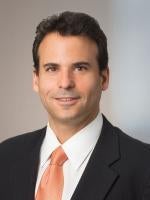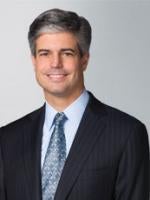It's dormie. On Eighteen. You're in great shape, having hit a solid drive, leaving yourself a fairway lie and a mid-iron into a back-right Sunday pin. Feeling good about your chances to even the match, you watch your opponent's ball come screaming out of the deep woods, cutting hard against the wind before bounding onto the green and rolling to thirty feet. What a miracle. He'll have two putts to win the match, but your partner is in good shape too.Kerplunk. His ball sails over the green and into the water. It's up to you. A perfect approach shot could set up a birdie putt to tie the match, but a wild swing will doom your comeback. You step up to your ball and wrap your fingers around the tacky grip of your 7-iron. Looking at the ball, confidence and fear wrestle in your mind, before you finally settle down and start your backswing. Just … make … contact.
All weekend warriors could use a little help making solid contact and it all starts with the right equipment. Earlier this month, the Federal Circuit gave the district court a mulligan in Nassau Precision Casting Co. v. Acushnet Co. Inc., No. 2013-1410 (Fed. Cir. June 6, 2014) (nonprecedential), a patent infringement suit dealing with irons designed to help amateur golfers hit better shots. Cobra Golf Co, then owned by Acushnet, introduced the Cobra S9 iron model in 2007 and the S9 Second Generation model in 2009. Marketed as "the most technologically advanced, most forgiving irons" Cobra had ever made, the S9 looked a bit different than that classic Ben Hogan 1-iron collecting dust in your garage. In designing the S9's club head, Cobra replaced the metal material from the top line of its backside with a lightweight polymer insert, allowing Cobra to add more metal to the bottom of the club without increasing the iron's overall weight. The concept of weight reallocation is common in "game-improvement" irons designed to help bad golfers hit shots with higher loft and straighter trajectory. By changing the club head's weight allocation, Cobra lowered the center of gravity of the S9, increasing the golfer's chances to strike the ball with the "sweet-spot" and avoid the dreaded shank.
The Cobra S9 model was commercially successful, achieving gold status on the covetedGolf Digest Hot List for three consecutive years beginning in 2007. However, Acushnet's big putt may have lipped out earlier this month, when the Federal Circuit partially vacated a district court's decision that Acushnet's Cobra S9 did not infringe on the patent of Nassau Precision Casting (U.S. Patent 5,486,000), which asserts two claims protecting methods of improving weight distribution in a golf club. Prior to filing suit, Nassau had approached Acushnet with notice of possible infringement and an offer to license the patent. Acushnet declined to pay any greens fee, and Nassau filed suit. The district court awarded Acushnet summary judgment of noninfringement, and Nassau appealed.
On appeal, the Federal Circuit examined whether the Cobra design infringed two claims of Nassau's '000 patent – while Acushnet won the front nine, the back nine was a different story. Claim 2 of the '000 patent covers reallocating the exact weight of the removed material from the top portion of the head to the bottom to improve a golfer's chance of striking the sweet spot, while keeping the overall weight of the club the same. In affirming the lower court's holding that Acushnet did not infringe with respect to Claim 2, the Federal Circuit held that because the polymer insert in Cobra's S9 model has a measurable weight, not all of the weight of the removed metal from the club head was reallocated to the bottom, and complete reallocation of weight was a necessary condition for infringement of Claim 2. By contrast, with respect to Claim 1 of the '000 patent, the Federal Circuit ruled that Acushnet may be out of bounds, vacating the district court's finding of noninfringement. Specifically, Claim 1 prohibits others from removing construction material from "a location not used during ball-striking" and relocating the construction material to the bottom of the iron's head. The actual Nassau iron embodies the claim quite literally, removing metal from the top of the club face without replacing it, leaving the club with an odd concave shape. The Federal Circuit reasoned that the Cobra S9 model removed material from the top line of the club's backside and reallocated it to the bottom of the club's backside (i.e., Cobra removed material from areas other than the club head face "used during ball-striking"), ultimately ruling that the lower court's ruling of noninfringement should be vacated based on either party's claim construction. The Federal Circuit remanded the case for further proceedings and to resolve issues of validity not reached by the district court.
The match-play battle between Acushnet and Nassau raises interesting questions about claim construction of sports equipment patents, and perhaps an even more interesting question about how to avoid the shanks. Is Cobra's ball still in play? Just like your 7-iron from the middle of the fairway on Eighteen, we'll soon find out.







 />i
/>i

